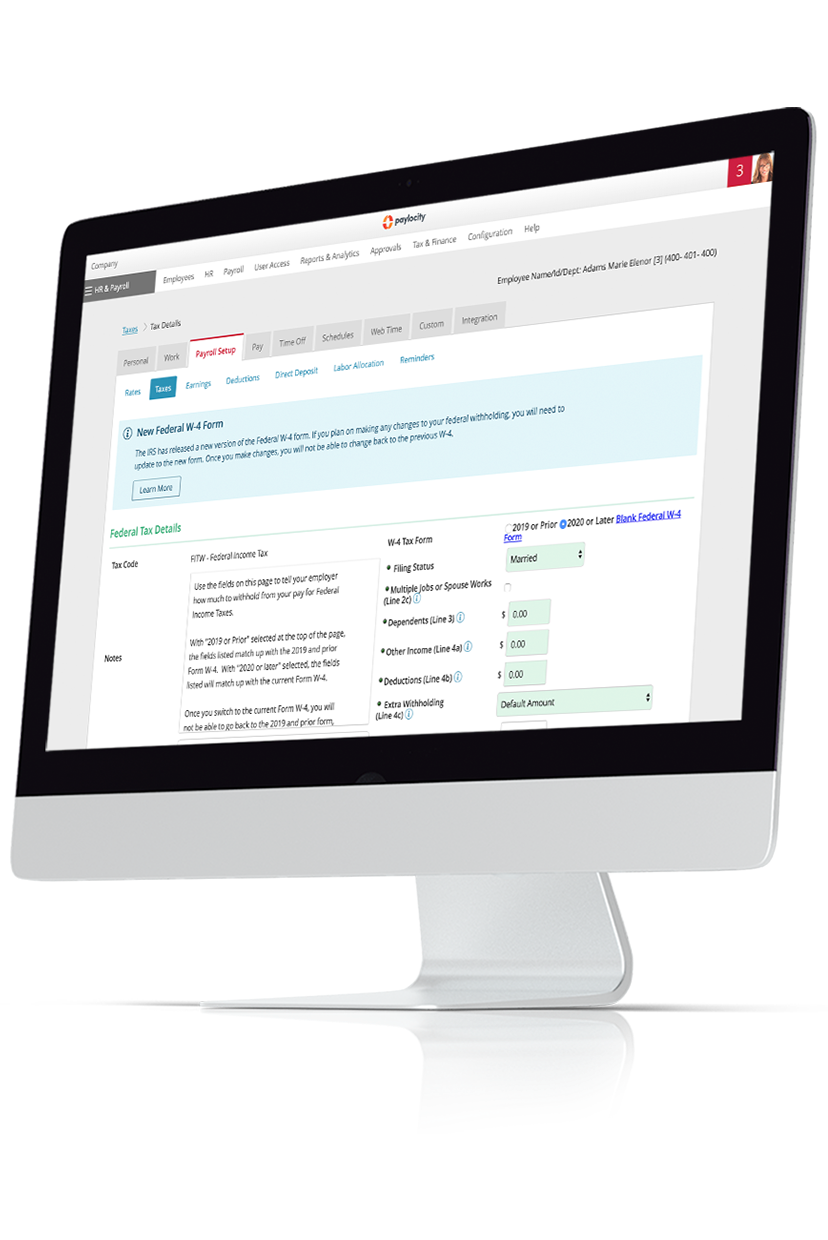Federal Income Tax Withholding (FITW)
Summary Definition: A recurring paycheck deduction employers submit to the IRS on an employee’s behalf to prepay the employee’s federal income taxes for the year.
What is Federal Withholding for Income Tax?
Federal income tax withholding (FITW or FIT withholding) is the portion of an employee’s gross wages their employer deducts from each paycheck and forwards to the Internal Revenue Service (IRS) as prepayment for their annual income tax liability.
The amount withheld varies based on two factors: the employee’s earnings, and the details provided on their Form W-4, such as filing status, dependents, and other adjustments.
As a withholding tax (w/h tax), federal income tax is just one type of mandatory payroll deduction employers must identify on an employee’s pay stub. Other withheld taxes include Medicare, Social Security, and state or local income taxes.
Key Takeaways
- Federal Income Tax Withholding (FITW) is a recurring paycheck deduction the IRS uses to incrementally prepay federal income taxes instead of requiring a lump sum payment at the end of the year.
- Each federal income tax withholding amount is based on the employee’s annual income level and the information they report on IRS Form W-4.
- An employee’s annual tax return determines if their federal income tax withholdings ultimately over- or underpaid their federal income taxes that year.
Importance of Tax Withholding
Established in 1943, the current FITW system allows the government to collect payments as taxpayers earn income instead of relying on annual lump sums. This guarantees income taxes are paid and helps individuals manage their overall tax obligations by avoiding a large, unexpected tax bill.
Federal income tax (FIT) funds various national programs, such as law enforcement, veteran affairs, national defense, and infrastructure improvements.
Tax Withholding vs. Estimated Taxes
Independent contractors and self-employed workers don’t have an employer to deduct and submit income tax payments on their behalf. Instead, they must make quarterly estimated tax payments based on their tax returns from the prior year.
Collection of other payroll taxes (i.e., Medicare and Social Security) are also required quarterly, though the amounts due are calculated differently than federal income tax.
How Does FITW Work?
After employers withhold federal income tax, employees can review said FITW on paycheck stubs, both for the current pay period and the whole year. At the end of the year, the federal W-2 Form summarizes an employee’s total wages and taxes withheld.
Taxpayers then use this information to file annual tax returns and determine whether they paid too much or too little.
What is IRS Form W-4?
The 2025 W-4 Form (a.k.a. Employee’s Withholding Certificate) is a tax document employees complete to help employers calculate estimated tax liabilities for the year, thus ensuring accurate withholdings. The reported information can include personal details, multiple jobs, spousal employment, and any applicable deductions or dependents.
Employees typically fill out a W-4 when starting a new job or when a significant change in their financial situation occurs, such as marriage, childbirth, or significant income adjustments. This ensures the withholding amount aligns closely with the employee’s actual tax obligation, minimizing the chances of overpaying taxes or facing a large balance at tax time.
How Much Federal Income Tax is Withheld?
The precise federal income tax withholding rate an employer uses varies by employee based on the employee's declared information and income. Employees can review each pay stub to see the exact FITW deduction for that paycheck or use the IRS’ tax withholding estimator to calculate federal income tax withholding proactively.
How Much Federal Income Tax Should Be Withheld?
There are currently seven federal income tax brackets, which apply incrementally larger income tax rates (10%, 12%, 22%, 24%, 32%, 35%, and 37%) as an individual’s taxable income for the year increases. Each rate, however, only applies to the income that falls within the corresponding bracket’s wage thresholds.
For example, suppose Taxpayer A’s annual taxable income is $75,000, and the existing tax brackets are:
- 10%: $0 - $10,000
- 12%: $10,001 - $40,000
- 22%: $40,001 - $80,000
Instead of owing 22% of the entire $75,000 (i.e., $16,500), Taxpayer A would owe 10% on the first $10,000, 12% on the next $30,000, and 22% on the final $35,000 for a total tax liability of $12,300 ($1,000 + $3,600 + $7,700) or 16% of their taxable income (a.k.a. their effective tax rate).
Why Was No Federal Income Tax Withheld from My Paycheck?
It is possible to be income tax exempt and have no federal income tax withheld from a paycheck. If an individual owed no federal income tax the prior year and expects to owe none for the current year, they can indicate as such on their W-4 Form and prevent their employer from withholding federal income tax every pay period.
This doesn’t, however, automatically exempt the individual from other payroll taxes (e.g., Federal Income Contributions Act (FICA) taxes).

Get Taxes Done Right, Without the Stress
We know there's a lot that goes into preparing and filing payroll tax forms. Save time and get support from our expert team. As a Registered Reporting Agent with the IRS, we can help prepare and file all the necessary forms you need to remain compliant - even in the face of changing legislation. Learn more here.
